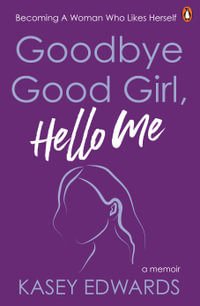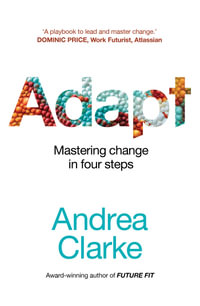
The User's Manual for the Brain Volume II
Mastering Systemic NLP
By: L Michael Hall, Bob G Bodenhamer
Hardcover | 14 August 2003
At a Glance
Hardcover
RRP $105.00
$96.25
Aims to ship in 5 to 10 business days
When will this arrive by?
Enter delivery postcode to estimate
This much anticipated volume continues in the tradition of Volume I as the most comprehensive manual published to date covering the NLP Practitioner course. The authors now introduce the latest advances in the field and invite you to reach beyond Practitioner level to Master level where you will develop the very spirit of NLP.
Includes exciting new work on:
- Meta-programs
- Meta-states
- Submodalities
In addition, this volume introduces the reader to:
- Advanced Meta-model Distinctions
- Mind-lines
- Advanced Time-line Patterns
- Meta-domains Systemic Model
Packed with case studies, seminar demonstrations, discussions and trance scripts, The User's Manual For The Brain Volume II will enable you to develop an attitude and spirit that allows you to apply the NLP Model powerfully.
The related paperback title The User's Manual for the Brain Volume I, 39.50.
The related CD-ROM title The User's Manual for the Brain Volume I CD, 99.99.
Industry Reviews
A welcome addition to the growing body of literature that differentiates Systemmic NLP from the (now in decline) trend to present NLP as a model of procedural techniques. Michael Hall presents a work which bravely confronts the meaning of the word aMastera and embraces the task of learning NLP in its delightfully complex simplicity. This is a very generous offering of theory, model and practical application and there is a good mix of traditional Systemmic NLP and Hall's original take on these subject areas. As usual, the reader is given work to do in translating some of the more obscure labelling, but well worth the trouble. Hall presents NLP as the rich subject that it is. If you got your NLP training through a quick installation package and would like to know what it really is that the rest of us are working with and talking about then this book will take you quite some way into appreciating the on-going process of NLP Mastery.
Beeleaf Training Pamel Gawler-Wright,
As a sequel to Volume I, Hall and Bodenhamer's User's Manual for the Brain, Volume II is a Master's level curriculum for NLP Practitioners. It takes a systemic approach to integrating NLP skills, presuppositions, models, processes, and applications within the four meta-domains, Meta States, Meta Modalities, Meta Programs, and the Meta Model, to arrive at the gestalt that is NLP. Moreover, the course content is conveyed in such a way as to install the attitudes of mastery and the apower of wizardrya that combines passion, motivation, and dedication. Readers will get a fresh new look at the presuppositions of NLP for shaping the prerequisite attitudes of NLP mastery. Those who own several of Hall and Bodenhamer's previous books will enjoy this one because it is the Grand Tour of their thinking and writing over the past decade, covering topics such as adragon slayinga (banishing negative states), the relationship between Meta Programs and Meta Modalities, time lining, mind lines (with a delightfully astute foray into presuppositional language patterns), Frame Games, Meta Model magic, Hall's Strategy Model, and Hall's recently-developed Matrix Model of the mind. Through writing that is clear, concise, crisp and engaging, Hall and Bodenhamer have drawn expertly on the work of other major developers of NLP, such as Bandler and Grinder, Cameron-Bandler, James, Woodsmall, Bateson, and their own contributions, to produce a unified field theory and the quintessential self-study course on advanced NLP.
Judith E Pearson PhD
As the title suggests, this second volume of The User's Manual for the Brain builds upon the skills of NLP outlined in Volume I, introducing some of the newer advances in the field that take the reader from the level of Practitioner to Master Practitioner. There is a wealth of information bringing advanced skills to the NLP Practitioner and as such is not a beginner's guide. Rather, Volume II offers a comprehensive manual covering many aspects of advanced NLP practice. Some of the new material introduced in this volume includes: Meta-Programmes, Meta-States, aSub-modalitesa as meta-level framing, Advanced Meta-Model distinctions, Mind-Lines as conversational reframing patterns, Advanced Time Line Patterns, The Meta-Domains systemic model. The book is further enhanced by the inclusion of some of the new advances in the concepts of meta programmes, meta states and submodalities. The User's Manual for the Brain Volume II is essentially a step by step guide to systematically integrating advanced NLP skills, presuppositions, models, processes and applications within the four meta domains: Meta-States, Meta-Modalities, Meta-Programmes and the Meta-Model. To this end, a wealth of exercises, scripts and comprehensive discussions are included that allow the NLP practitioner to further enhance and refine their therapeutic techniques. At the start of each chapter a particular skill or concept is introduced. This theme is then developed to an advanced level before concluding with a summary that encapsulates the main points of learning. Diagrams, flow charts and tables included throughout the text are occasional. One criticism could be applied that there should be more of these to cater for those readers who process more in a avisual' modality. Written clearly and concisely, this textbook is by no means alightweight', and the authors' genuine passion for NLP shines throughout. Bodenhammer and Hall have thankfully avoided using an academic tone, managing to aspeak' through their writing pretty much in the same way as they would aspeak' those ideas when teaching on a training course. This very much increases the whole auser friendly' tone that is evident upon reading this book. The authors state that they wish to invite the reader to experience athe adventure of mastery of NLPa. This they say does not come about through the mere acquisition of skills but also requires the development of an attitude, to develop the very spirit of NLP and to become aa master in running your own brain'. In my opinion Bob Bodenhammer and Michael Hall have written a book that most certainly lives up to this premise. The User's Manual for the Brain Volume II is an incredibly informative read, and one may be tempted to fall into the trap of thinking that it could replace attendance at a professional training course. However, it should be remembered that theoretical learning alone does not replace practice, and that a combination of both under professional supervision is required for the development of both skill and experience. Even though the book contains many practical exercises, in order to bring all these fascinating tools to life a partner or study group is most certainly required. I found the chapter on aPractical NLP' a particularly enjoyable read. The authors ask: aWhen you finally reach a place of mastery, then what? What will that do for you?a To answer these questions they present an excellent overview demonstrating how NLP can be used to create significant and beneficial changes within a variety of areas that include psychotherapy, education, and business, and, of course, within the field of personal growth. The book does have a comprehensive bibliography. However, it noticeably lacks index that would enable readers who wish to pull together all the relevant strands of information on a given topic to do so. Similarly a glossary of terms, such as is available in Volume I, is missing and would also be greatly welcomed. From the outset, the authors advise that if the reader wishes to fully master the material contained within The User's Manual for the Brain Volume II they awill need a good dose of courage, boldness and passion, for these patterns will not work their full magic if you attempt to use them while you are hesitating, fearful or unmotivateda. This is certainly not a book for the fainthearted and for anyone new to NLP it will not be an easy read. It is an advanced manual dealing with complex topics and as such assumes that the reader is already familiar with Volume I or has completed an NLP Practitioner course. With this in mind the book is a goldmine of useful information and is to be highly recommended.
LCCH News Anne Marshall,
For those who use NLP extensively and would like a greater understanding of the aHow' and the aWhy' of the process, this is the book to read! It is a very comprehensive guide to the methods and the uses of NLP including its modalities and sub modalities and all the MetaStates etc and will increase your knowledge and understanding of the subject up to Master Practitioner level. If you read and enjoyed the first volume of The User's Manual for the Brain and wish to carry the subject further then Volume II is for you.
Pat Doohan, National Council of Psychotherapists
Having a background in psychology and (more importantly here) philosophy, I liked this book yet I suspect the masses will find it a little arid. Whilst volume 1 (I would say a prerequisite read for this book) dealt with the practice of NLP in it's on-the-ground form, volume 2 seeks to deal with the spirit of NLP, leading to aNLP Masterya (not entirely sure I appreciate the hegemony of this internal nomenclature*). Volume 1 encourages us to ask and answer the ajournalists questions'; awhat, how, who, when, wherea. Volume 2 asks the question the novice and the aNLP Master' will seek quite different answers to; awhy?a Why do some techniques work only some of the time? Why do some techniques work at all? Why practice NLP? In my review of volume 1, I likened the book to the owner's manual for a car, and as any fellow car enthusiast will tell you when it comes to car manuals, there is the owner's (user's) manual then there is the workshop (engineer's / mechanic's) manual. So perhaps volume 2 is the workshop manual, and likewise it also follows that this book will not have the (relatively) popular appeal of the first volume. Much as the home mechanic may take little account of how changes in one system can affect the whole vehicle because it already built, but the engineer / designer must view the vehicle as a whole gestalt, so this book deals with all the NLP systems (models) concurrently. The concept of aecology' (opportunity cost / fit) has been something I had been thinking about a lot recently in response to personal change challenges my clients face in my practices. Sure the aecology' of a goal is simple practitioner's stuff, but the real ecology of the gestalt, of the real changes made using the techniques and how the techniques interact upon one another, this had got me thinking. The User's Manual for the Brain Volume 2 was offering some answers, allowing me to delve deeper in my practice, if a particular technique or pattern was not operating as I had hoped, why? And just as importantly, how could I go about improving the dynamic? One over-arching theme the authors work towards is a aunified theory of NLP', and plentiful use of the concept of ameta'. It was a revelation, to find that the; 1 Meta-States, 2 Meta-Programs, 3 Meta-Model distinctions and the 4 Sub- Modalities (re-designated ameta-modalities' for good reasons you will find out) - all relate to the same underlying processes. Redundancy and simplification in the methods, great! Had I not learnt this, I would still have been carrying around, in my head, an unwieldy and disconnected mental model of these different (yet same) facets of the NLP method. Suddenly instead of using rote descriptions and applications of these facets, my mind is developing a compact, flexible, algorithmic perception of this knowledge. When you read the book and the same happens, you'll reap the benefits of the vast applicability of instantly generated techniques. Another element I enjoyed whilst reading this c.450 page book is that the concept of ameta' is so prominent. During my time studying psychology at university I became very interested in the concepts of paradox, and self reference (reflexivity). Consistent-inconsistency, the rejection of the grand narrative as a grand narrative itself and that sort of thing, all very post modern. Although at this time my interest was purely academic, I always had a niggling feeling that this area of though must have some profound and practical implications a upon reading this book I found I was right. Language, meta programmes and meta states create paradox and conflict, not the world at large -in-and-of-it's-self. I knew this yet had not perceived the practical implications before, but in the world there is no paradox, no axiomatic authority, prominence, or hierarchy of levels of meaning. With due respect to the primacy of Bertrand Russel's asets of categories', Albert Ellis's acompound emotions' and Sartre, but here is a true revelation, an epiphany even, about the position and imposition of meaning in a cold and category-less world. Wow! People's perceived problems are not absolute or even ones of subjective assessment, but are problems of category and hierarchy alone. Suddenly sitting before me in my practice were not people with a set problem in and of itself. Instead I found before me people whose arbitrary assignment of pre-eminence of one category (whose delineations are just as arbitrary) over another was operating as a problem within their perceived world. It was as if I was suddenly watching a steam of green numbers cascading downwards against a black background.
Paul Jones, Hypnotherapist, LCCH Book Reviewer
This sequel to Vol 1 is excellent. Vol 2 is the Masters book a and, as such, has a wealth of new techniques and ideas on how to use NLP effectively and efficiently. This is an all-enhancing, easy to use manual that takes an NLP Practitioner to the next level. Included in the volume are the 4 meta-domains with very clear explanations and instructions on how to use these with pure mastery. If you want to improve and excel at NLP, I would recommend this work a it is pure genius. 5 stars
Terri Bodell NACHP
ISBN: 9781899836888
ISBN-10: 1899836888
Published: 14th August 2003
Format: Hardcover
Language: English
Number of Pages: 480
Audience: Professional and Scholarly
Publisher: CROWN HOUSE PUBLISHING
Country of Publication: GB
Dimensions (cm): 25.0 x 17.3 x 3.7
Weight (kg): 0.99
Shipping
| Standard Shipping | Express Shipping | |
|---|---|---|
| Metro postcodes: | $9.99 | $14.95 |
| Regional postcodes: | $9.99 | $14.95 |
| Rural postcodes: | $9.99 | $14.95 |
How to return your order
At Booktopia, we offer hassle-free returns in accordance with our returns policy. If you wish to return an item, please get in touch with Booktopia Customer Care.
Additional postage charges may be applicable.
Defective items
If there is a problem with any of the items received for your order then the Booktopia Customer Care team is ready to assist you.
For more info please visit our Help Centre.























